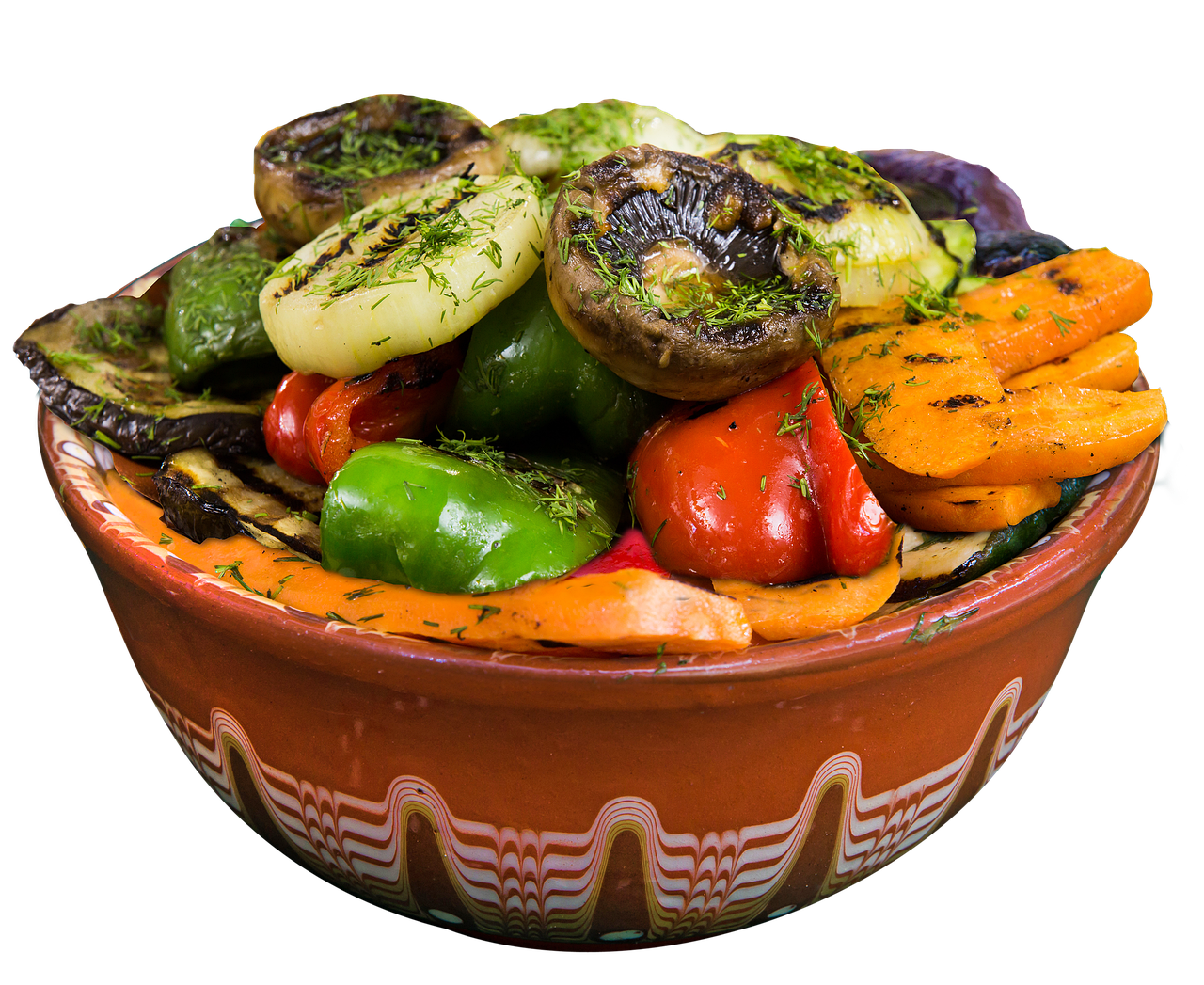Have you ever wondered how to elevate your vegan dishes from good to absolutely mouthwatering? The secret might be simpler than you think: herbs and spices. Imagine biting into a vegan curry that’s so bursting with flavor it transports you to the streets of Mumbai. Or savoring a simple salad made transcendent by the right sprinkle of herbs. This magic transformation isn’t by accident; it’s all thanks to the world of herbs and spices.
In fact, the best herbs and spices for vegan recipes can be game changers. Today, let’s embark on this flavorful journey together as if I were sharing a cherished kitchen secret with a close friend. And trust me, by the end of this, your taste buds will thank you.
The Role of Herbs and Spices in Vegan Cooking
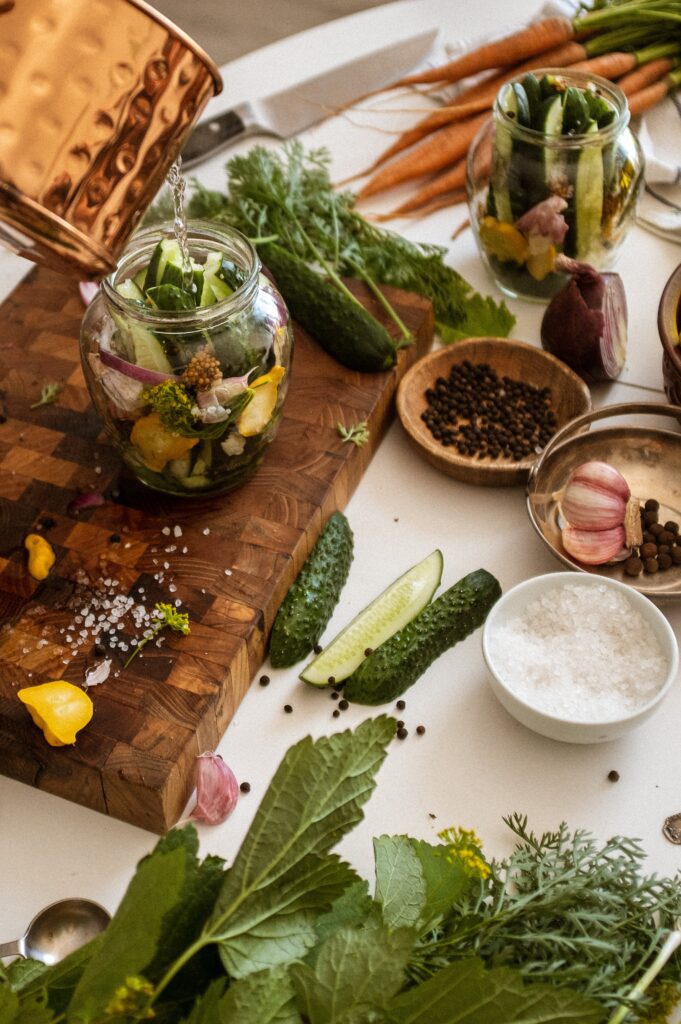
Herbs and spices play a monumental role in vegan cooking, acting as the unsung heroes behind every delectable dish. Their primary role is to add a depth of flavor and complexity that can often be challenging to achieve in vegan cuisine due to the absence of animal products.
Fresh herbs like basil, cilantro, rosemary, or spices like turmeric, cumin, and paprika can transform a simple vegetable stew into an unforgettable gastronomic experience.
But their role extends beyond just tantalizing our taste buds. Many herbs and spices are also packed with health benefits. For instance, turmeric is lauded for its anti-inflammatory properties, largely thanks to curcumin.
Similarly, cinnamon can help regulate blood sugar levels, and garlic has been linked to heart health. These powerful botanicals not only uplift our dishes but also contribute significantly to our wellness.
The Best Herbs And Spices For Vegan Recipes
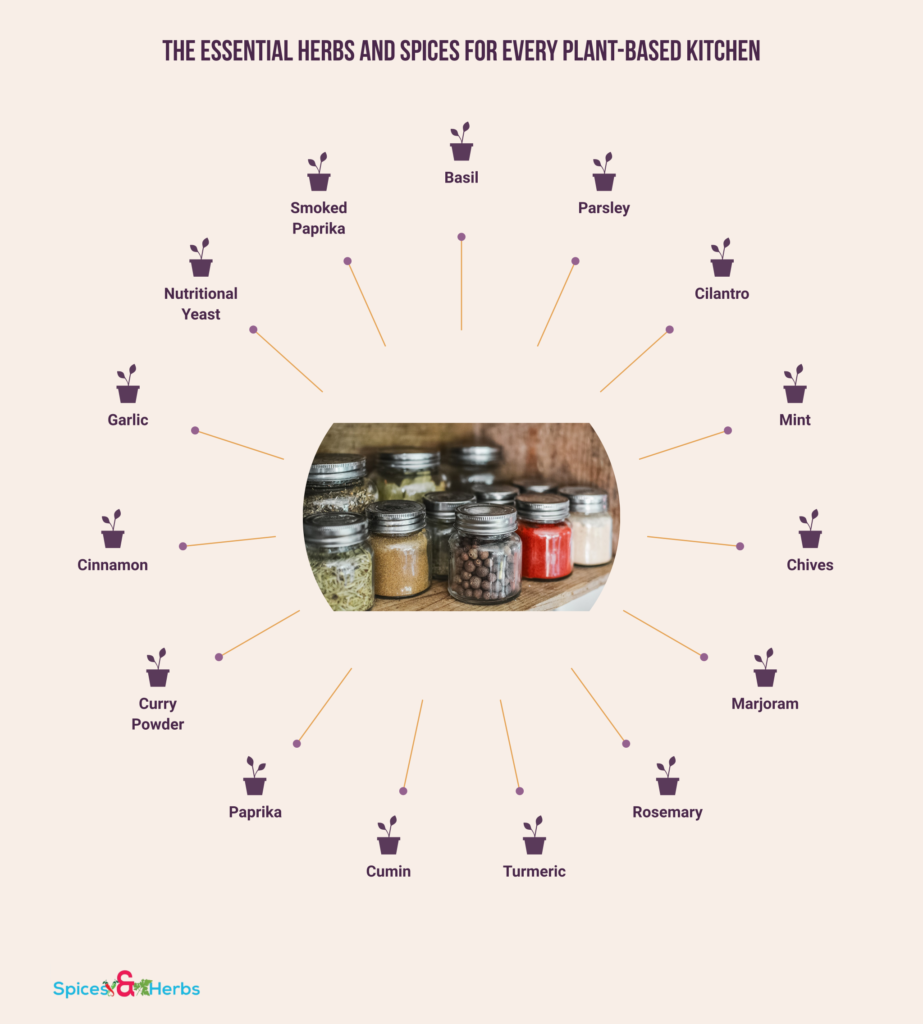
As I’ve promised earlier, here are my top picks for the best herbs and spices to level up your vegan recipes:
🌱 Basil
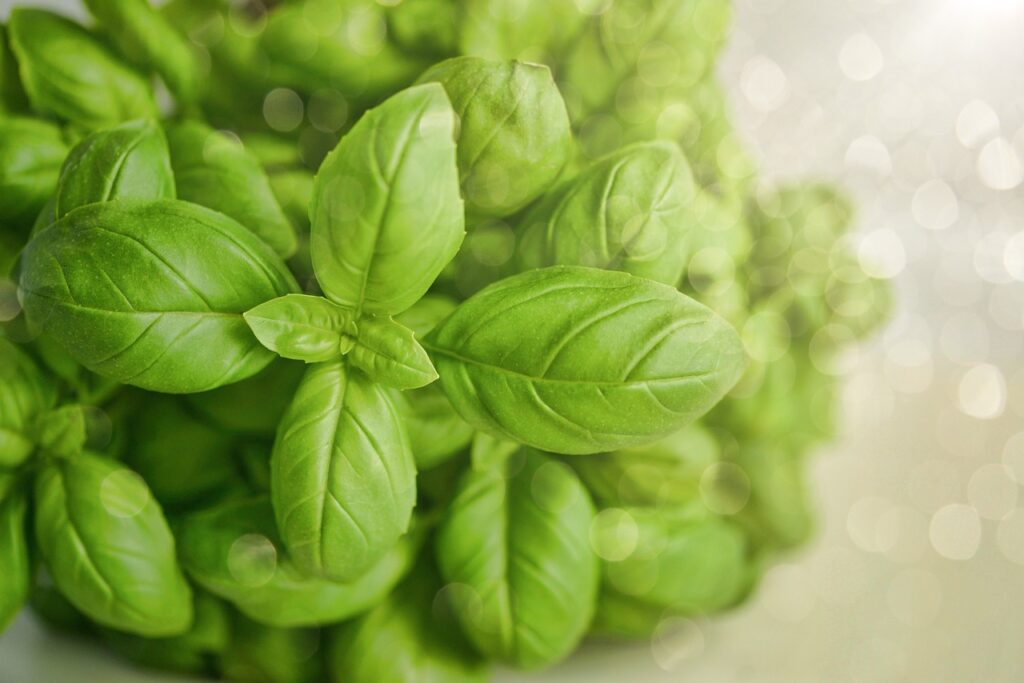 Basil, with its vibrant green leaves and distinctive aroma, is an indispensable herb in many vegan kitchens. The flavor profile of basil is fresh, peppery, and slightly sweet, making it a perfect accompaniment to a variety of dishes. It adds a depth of flavor to sauces, salads, and especially Italian cuisine.
Basil, with its vibrant green leaves and distinctive aroma, is an indispensable herb in many vegan kitchens. The flavor profile of basil is fresh, peppery, and slightly sweet, making it a perfect accompaniment to a variety of dishes. It adds a depth of flavor to sauces, salads, and especially Italian cuisine.
Plus, the health benefits of basil are notable. It’s packed with vitamins A, K, and C and is a good source of magnesium, iron, and potassium. One popular vegan dish that utilizes basil is the classic pesto sauce made with fresh basil leaves, pine nuts, garlic, and olive oil.
Another is a simple Caprese salad substitute with juicy tomatoes, thick slices of vegan mozzarella, and generous layers of fresh basil leaves.
🌱 Parsley
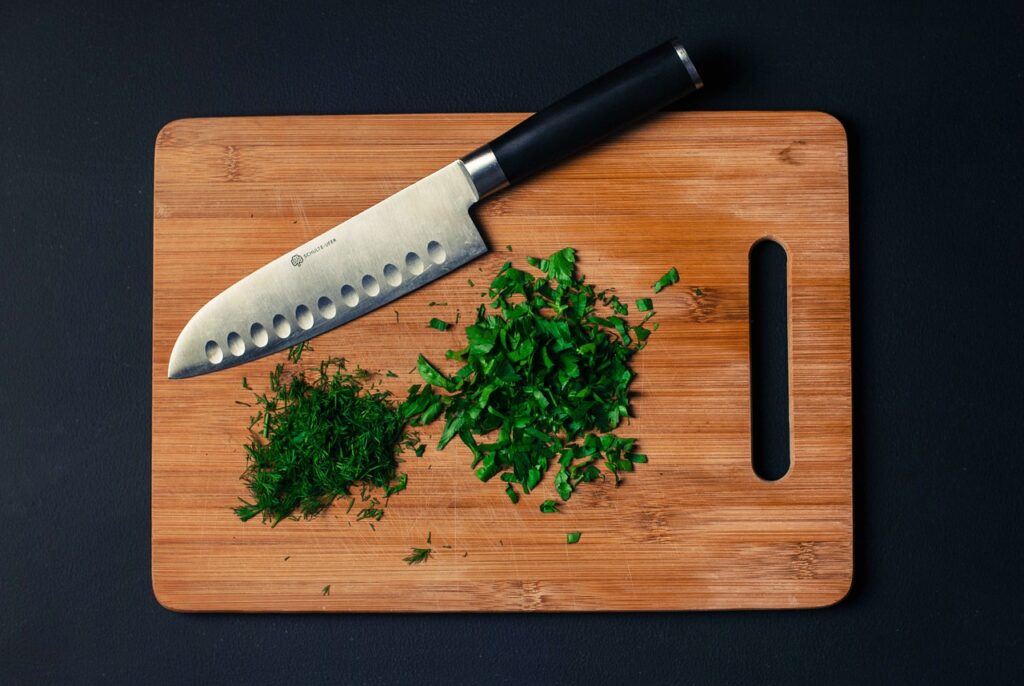 Parsley is more than just a garnish; it’s a powerhouse of flavor and nutrients, making it one of my favorites. Its flavor can be described as fresh, slightly peppery, yet subtly bitter, bringing a balance to many vegan dishes.
Parsley is more than just a garnish; it’s a powerhouse of flavor and nutrients, making it one of my favorites. Its flavor can be described as fresh, slightly peppery, yet subtly bitter, bringing a balance to many vegan dishes.
For health benefits, parsley is a nutritional superstar. It’s rich in vitamins K, C, and A and a good source of folate and iron. Not to mention, it also contains antioxidants that promote your health.
When it comes to vegan recipes, parsley shines in dishes like tabbouleh, a Middle Eastern salad where it’s the star ingredient. It also pairs beautifully with garlic for a classic parsley pesto – a delightful twist on the traditional basil pesto, perfect on pasta, bread, and even roasted vegetables. Trust me, the humble parsley is worth a second look.
🌱 Cilantro
 Cilantro, or coriander as it’s known in some countries, is a herb that holds a special place in my heart. Its flavor is unique and somewhat polarizing; it’s fresh, citrusy, and slightly peppery with a hint of minty nuances. Some people love it, while others find it soapy. But for me, it’s an essential part of many vegan dishes.
Cilantro, or coriander as it’s known in some countries, is a herb that holds a special place in my heart. Its flavor is unique and somewhat polarizing; it’s fresh, citrusy, and slightly peppery with a hint of minty nuances. Some people love it, while others find it soapy. But for me, it’s an essential part of many vegan dishes.
The health benefits of cilantro are impressive. It’s full of antioxidants, and it’s a good source of dietary fiber, vitamins A, C, E, K, calcium, iron, potassium, and magnesium. In vegan cuisine, cilantro is the star of many recipes. It’s an integral part of salsa verde, perfect in a fresh and tangy quinoa salad or a cilantro-lime dressing that can jazz up any salad.
If you’re into Asian cuisines like me, combining cilantro, lime, and chili pepper is a must-have for a vegan pho or fresh spring rolls. Cilantro may be controversial, but if you’re on the love-it side, it’s one of the best herbs to have in your vegan kitchen.
🌱 Mint
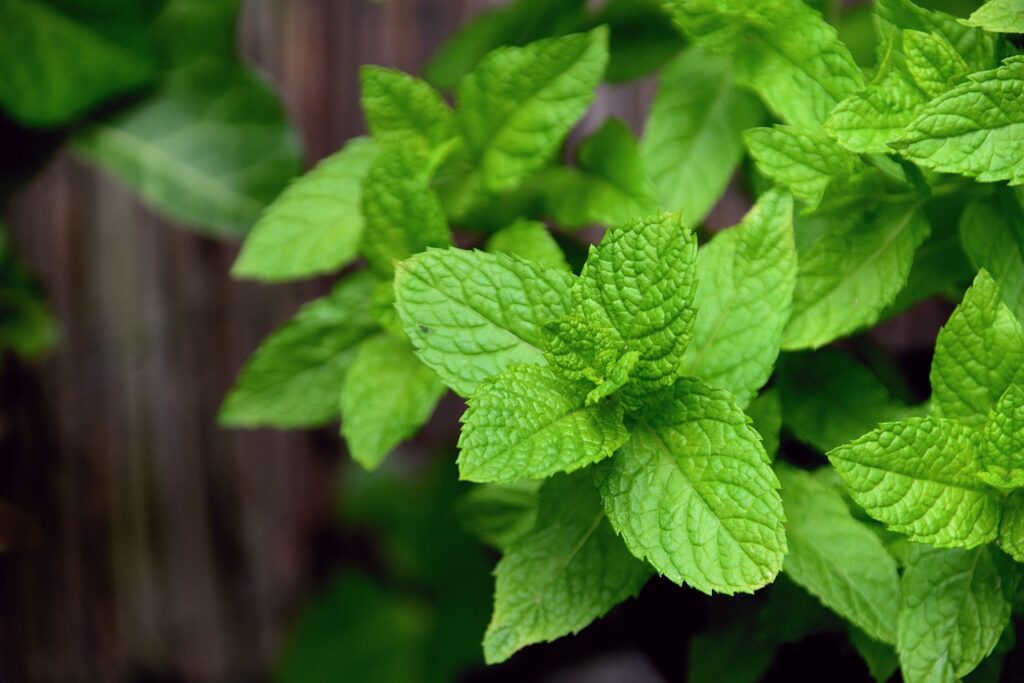 Mint is truly a refreshing hero in the world of herbs. Its cool, refreshing flavor and aroma make it a favorite in my vegan kitchen. Whether it’s spearmint or peppermint, the taste is distinctive, leaving a crisp, clean sensation on your palate. You might be surprised to know that besides its culinary uses, mint is rich in nutrients. It’s packed with vitamins A, C, and B2, along with valuable minerals like calcium, zinc, and magnesium.
Mint is truly a refreshing hero in the world of herbs. Its cool, refreshing flavor and aroma make it a favorite in my vegan kitchen. Whether it’s spearmint or peppermint, the taste is distinctive, leaving a crisp, clean sensation on your palate. You might be surprised to know that besides its culinary uses, mint is rich in nutrients. It’s packed with vitamins A, C, and B2, along with valuable minerals like calcium, zinc, and magnesium.
Mint is also well-known for its digestive benefits and has been used for centuries to soothe stomach troubles. When it comes to vegan recipes, mint is incredibly versatile. It adds a fresh twist to a classic tabbouleh, bringing a cool balance to spicy curries, and I absolutely love it in a chilled cucumber-mint soup on a hot summer day.
And let’s not forget the refreshing punch it brings to fruit salads, lemonades, and mojitos. So whether you’re garnishing, blending, or infusing, consider mint a staple in your vegan herb and spice arsenal.
🌱 Chives
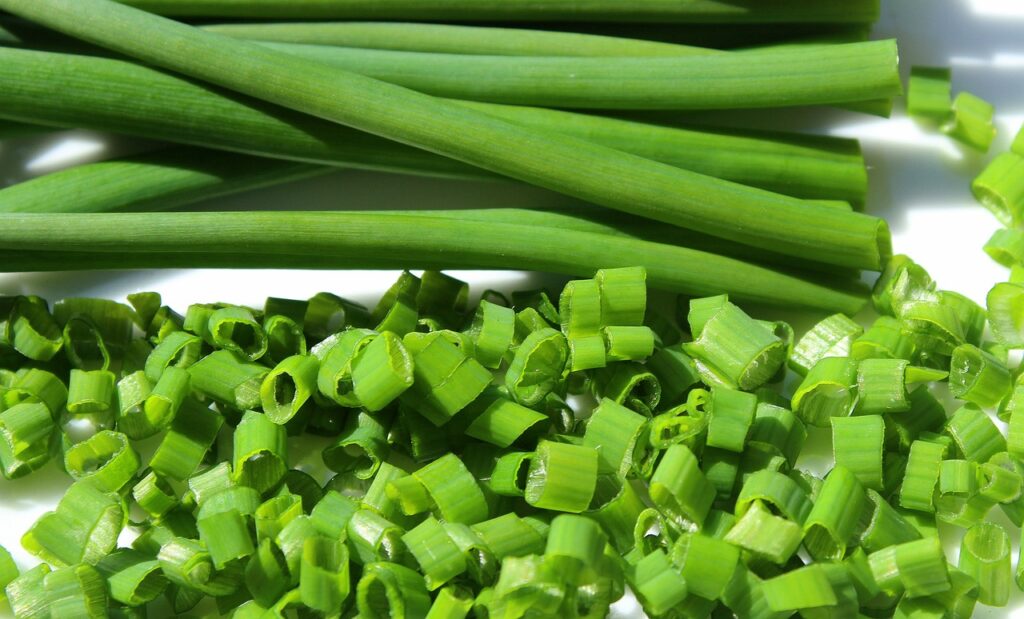 Chives, also known as onion chives, are a member of the allium family. Their mild onion flavor and delicate grassy aroma make them a perfect addition to vegan dishes that need a touch of savory without overpowering other flavors. Chives are rich in vitamins A, C, and K, as well as minerals like iron and calcium.
Chives, also known as onion chives, are a member of the allium family. Their mild onion flavor and delicate grassy aroma make them a perfect addition to vegan dishes that need a touch of savory without overpowering other flavors. Chives are rich in vitamins A, C, and K, as well as minerals like iron and calcium.
Plus, they contain beneficial compounds that have antioxidant and anti-inflammatory properties. These characteristics make chives a great choice for boosting your immune system. In the kitchen, chives can be used in many ways – chopped and sprinkled on top of salads, soups, and stews; mixed into vegan cream cheese or butter; or even blended into a pesto sauce.
One of my favorite ways to use chives is in a creamy potato and chive soup – it’s comforting and satisfying, yet light and flavorful.
🌱 Marjoram
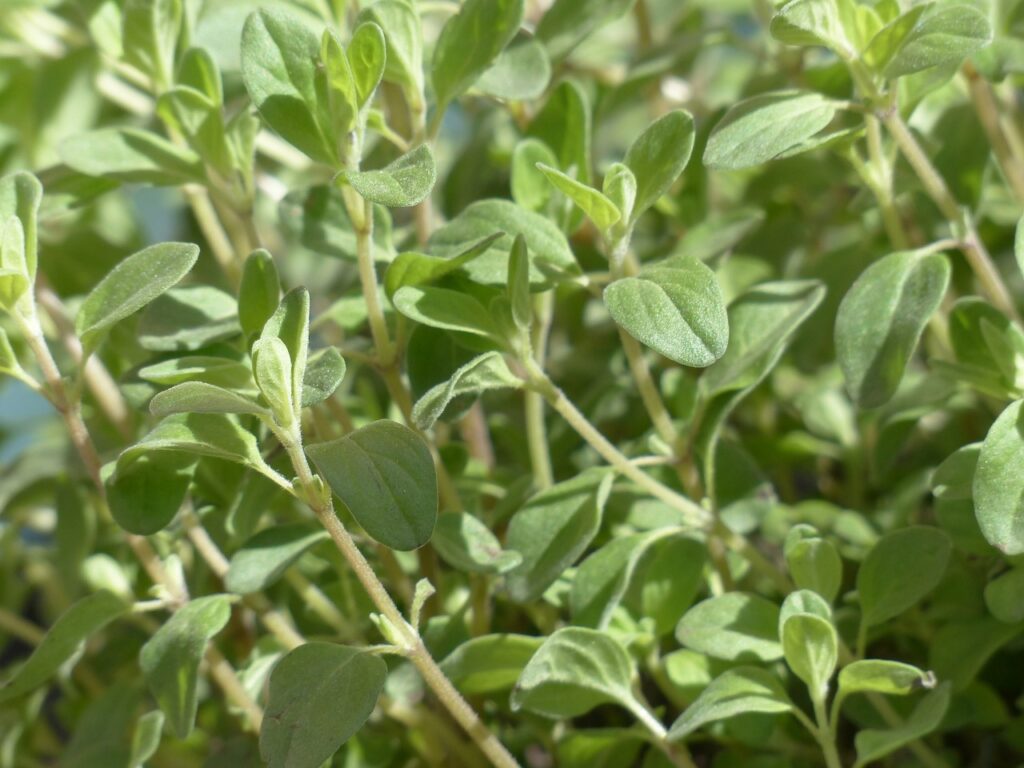 Marjoram is an aromatic herb from the mint family, but its flavor profile is closer to oregano. It has a sweet and slightly bitter taste with hints of citrus and pine. This herb is rich in vitamins A, C, and K, as well as minerals like iron and calcium.
Marjoram is an aromatic herb from the mint family, but its flavor profile is closer to oregano. It has a sweet and slightly bitter taste with hints of citrus and pine. This herb is rich in vitamins A, C, and K, as well as minerals like iron and calcium.
Marjoram also contains compounds that have anti-inflammatory properties and can help improve digestion. In the kitchen, marjoram is a versatile herb that pairs well with vegetables, legumes, and grains. It adds depth and complexity to stews, soups, and roasted vegetable dishes. You can also use it in salad dressings or marinades for a unique twist on traditional flavors.
🌱 Rosemary
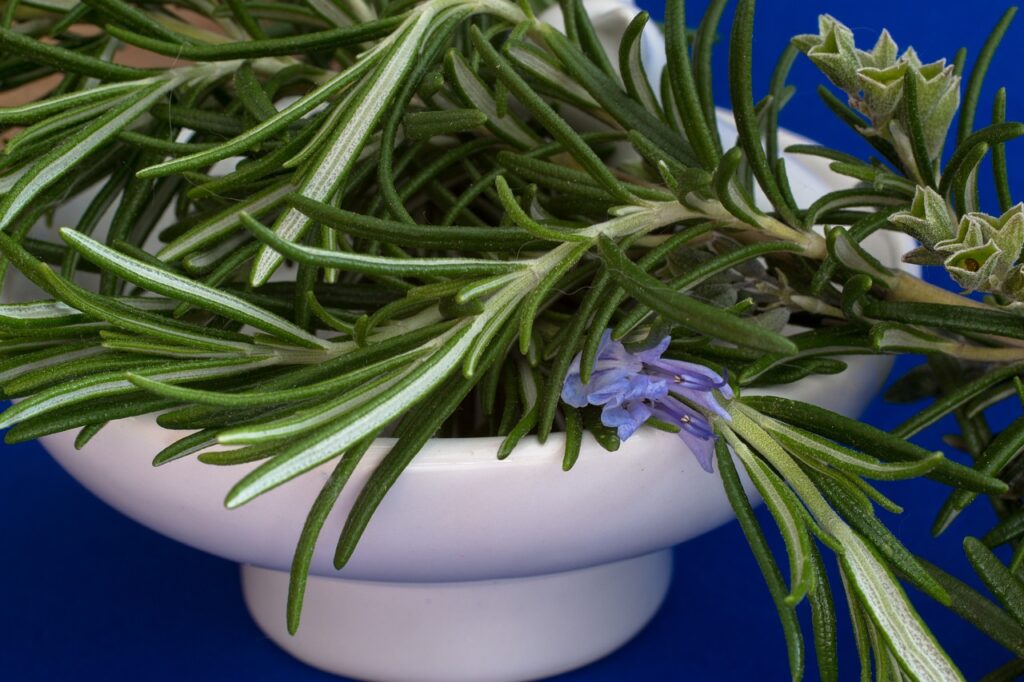 Rosemary is an evergreen herb with a woody, pine-like scent and a strong, distinct flavor. It’s rich in antioxidants and compounds that have anti-inflammatory properties, making it a great addition to a vegan diet. Rosemary is also known for its ability to improve memory and cognitive function.
Rosemary is an evergreen herb with a woody, pine-like scent and a strong, distinct flavor. It’s rich in antioxidants and compounds that have anti-inflammatory properties, making it a great addition to a vegan diet. Rosemary is also known for its ability to improve memory and cognitive function.
In the kitchen, rosemary can be used in both sweet and savory dishes, adding depth and aroma. It pairs well with roasted vegetables, potatoes, and grains like quinoa and rice. You can also use it to infuse oils or vinegar for a flavorful dressing or marinade.
🌱 Turmeric
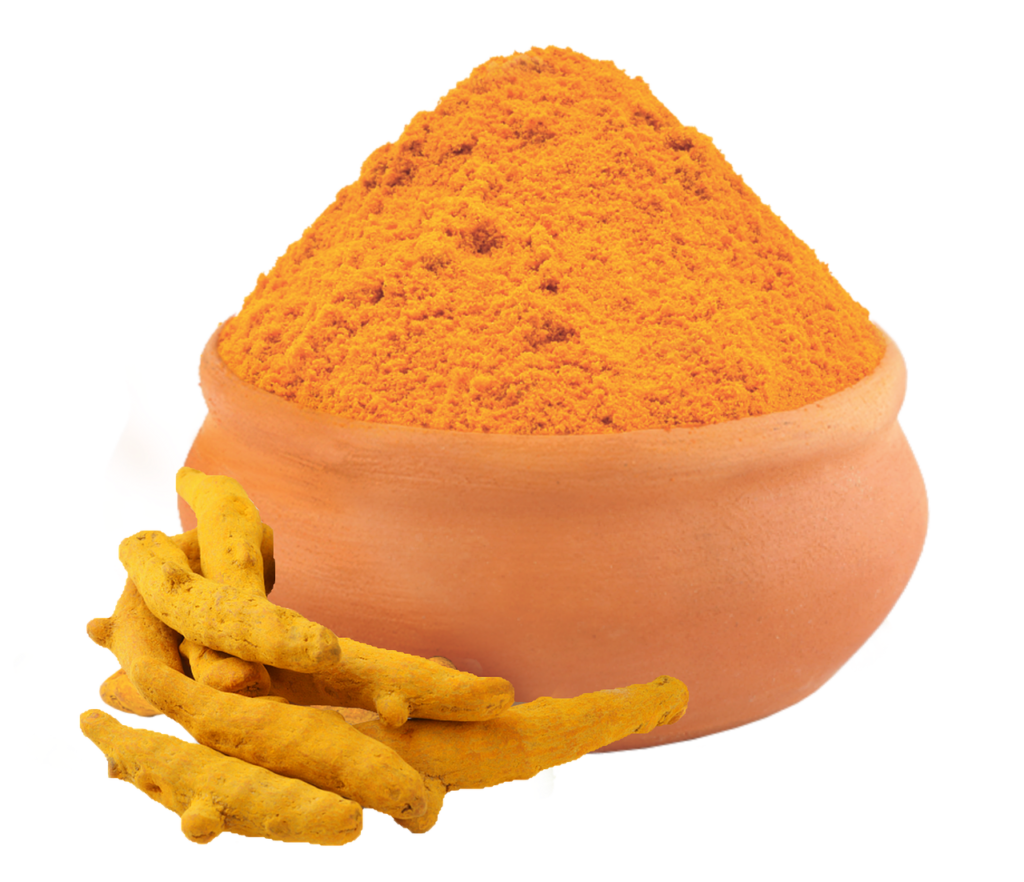 Turmeric is much more than a mere spice; it’s a superfood in my vegan kitchen. Known for its vibrant orange-yellow color, turmeric adds a warm, earthy flavor to dishes, making it a staple in curries and soups. But what sets turmeric apart is its wealth of health benefits. It’s packed with curcumin, a potent antioxidant with anti-inflammatory properties.
Turmeric is much more than a mere spice; it’s a superfood in my vegan kitchen. Known for its vibrant orange-yellow color, turmeric adds a warm, earthy flavor to dishes, making it a staple in curries and soups. But what sets turmeric apart is its wealth of health benefits. It’s packed with curcumin, a potent antioxidant with anti-inflammatory properties.
I love sprinkling a bit of turmeric in my lentil soup or adding it to my tofu scramble for that savory touch and the added health kick. Turmeric is also a brilliant natural food colorant. Want to make a golden latte? Just add a dash of turmeric! Its versatility and health benefits make it an indispensable herb in any vegan kitchen.
🌱 Cumin
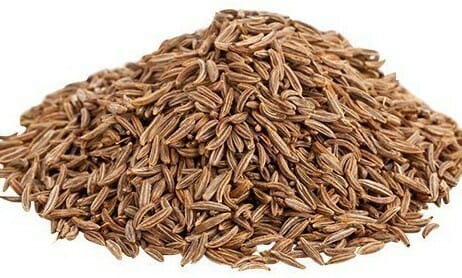 Cumin is a staple ingredient in many cuisines worldwide, and it’s no surprise why. This warm, aromatic spice adds depth and complexity to dishes with its slightly nutty, peppery flavor. Cumin is also rich in iron, making it a valuable addition to vegan diets that may be lacking in this essential mineral. I love using cumin in my bean and lentil dishes, as well as in my homemade falafel.
Cumin is a staple ingredient in many cuisines worldwide, and it’s no surprise why. This warm, aromatic spice adds depth and complexity to dishes with its slightly nutty, peppery flavor. Cumin is also rich in iron, making it a valuable addition to vegan diets that may be lacking in this essential mineral. I love using cumin in my bean and lentil dishes, as well as in my homemade falafel.
And let’s remember the classic combination of cumin with coriander and chili powder in vegan chili con carne. Whether you’re making Mexican, Indian, or Middle Eastern-inspired dishes, cumin is a must-have herb in your pantry.
🌱 Paprika
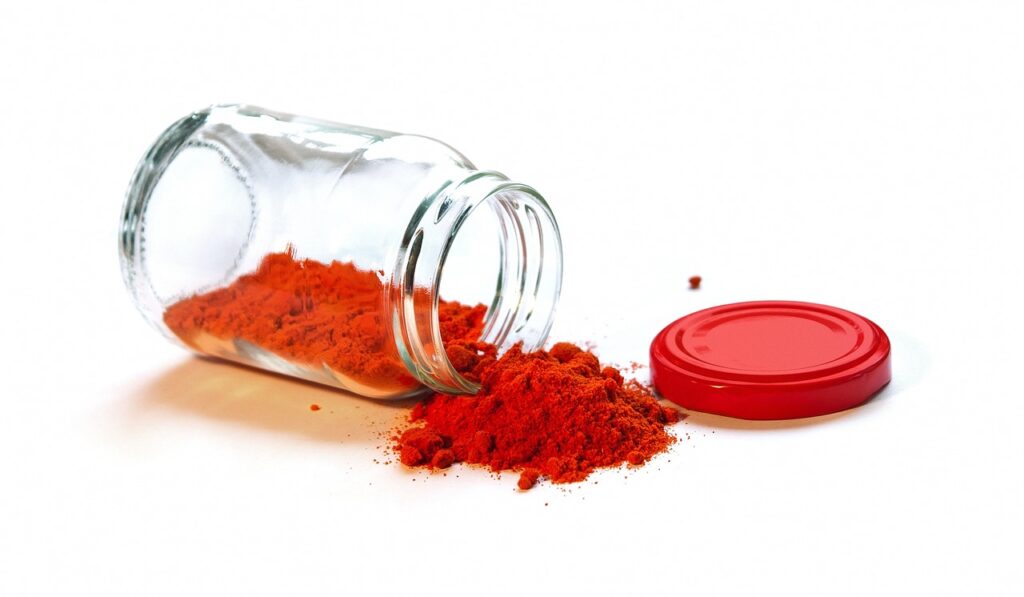 Paprika is often overlooked in favor of its more pungent cousins, chili powder, and cayenne pepper. But this sweet, smoky spice adds a unique flavor to dishes that shouldn’t be underestimated. Made from dried and ground bell peppers, paprika brings a beautiful red color and subtle heat to your vegan recipes.
Paprika is often overlooked in favor of its more pungent cousins, chili powder, and cayenne pepper. But this sweet, smoky spice adds a unique flavor to dishes that shouldn’t be underestimated. Made from dried and ground bell peppers, paprika brings a beautiful red color and subtle heat to your vegan recipes.
I love using paprika in my roasted vegetable dishes or sprinkled on top of avocado toast for a pop of color and flavor. It’s also a key ingredient in Hungarian goulash, which can easily be made vegan with plant-based protein sources.
🌱 Curry Powder
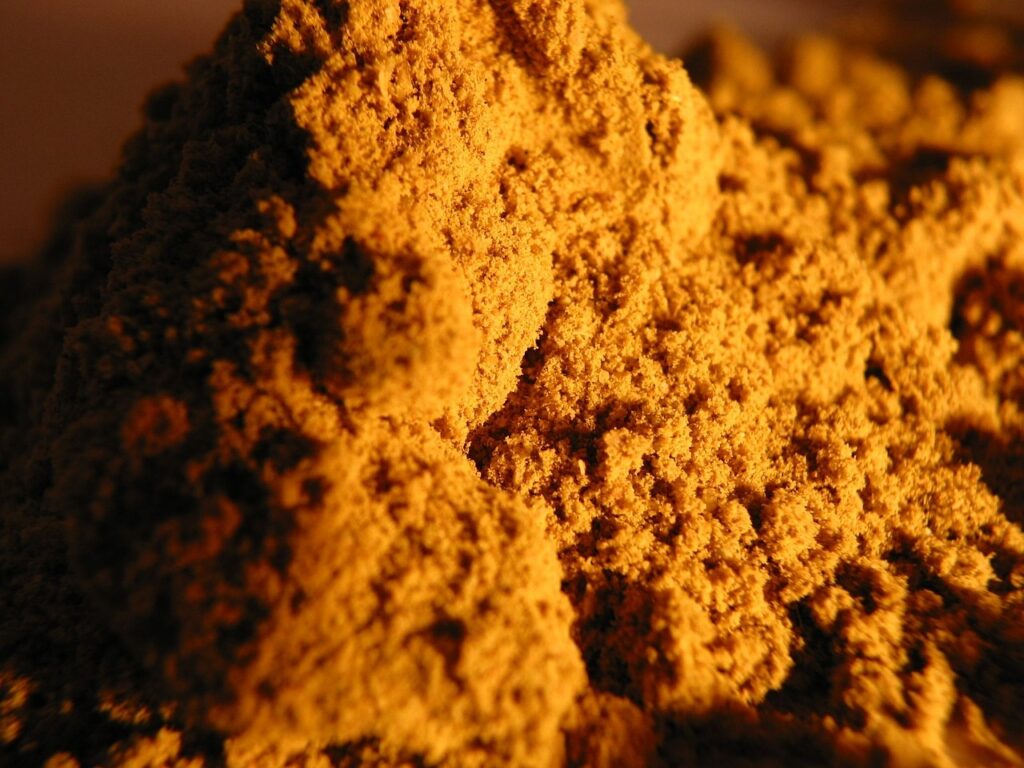 Curry powder is a blend of various spices, including cumin, coriander, turmeric, ginger, and chili powder. This flavorful mix adds depth and complexity to dishes and can be used in a variety of cuisines.
Curry powder is a blend of various spices, including cumin, coriander, turmeric, ginger, and chili powder. This flavorful mix adds depth and complexity to dishes and can be used in a variety of cuisines.
Of course, curry powder is essential for making delicious vegan curries. But it also works well in soups, stews, and even as a rub for roasted vegetables or tofu. I like to mix my own curry powder at home so I can adjust the spice level to my preference.
🌱 Cinnamon
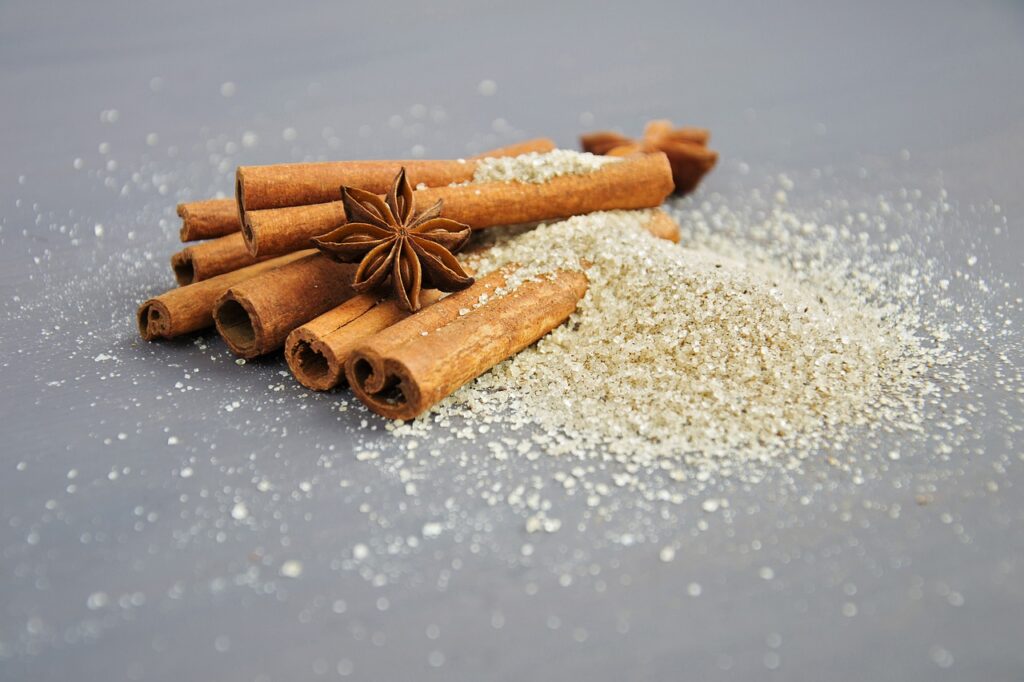 While often thought of as a sweet spice, cinnamon can also add warmth and depth to savory dishes. It’s commonly used in Middle Eastern cuisine, where it pairs well with chickpeas and lentils. I like to add a pinch of cinnamon to my tomato-based sauces for pasta or chili for an unexpected twist. And, of course, who can resist a warm bowl of vegan apple cinnamon oatmeal for breakfast?
While often thought of as a sweet spice, cinnamon can also add warmth and depth to savory dishes. It’s commonly used in Middle Eastern cuisine, where it pairs well with chickpeas and lentils. I like to add a pinch of cinnamon to my tomato-based sauces for pasta or chili for an unexpected twist. And, of course, who can resist a warm bowl of vegan apple cinnamon oatmeal for breakfast?
🌱 Garlic
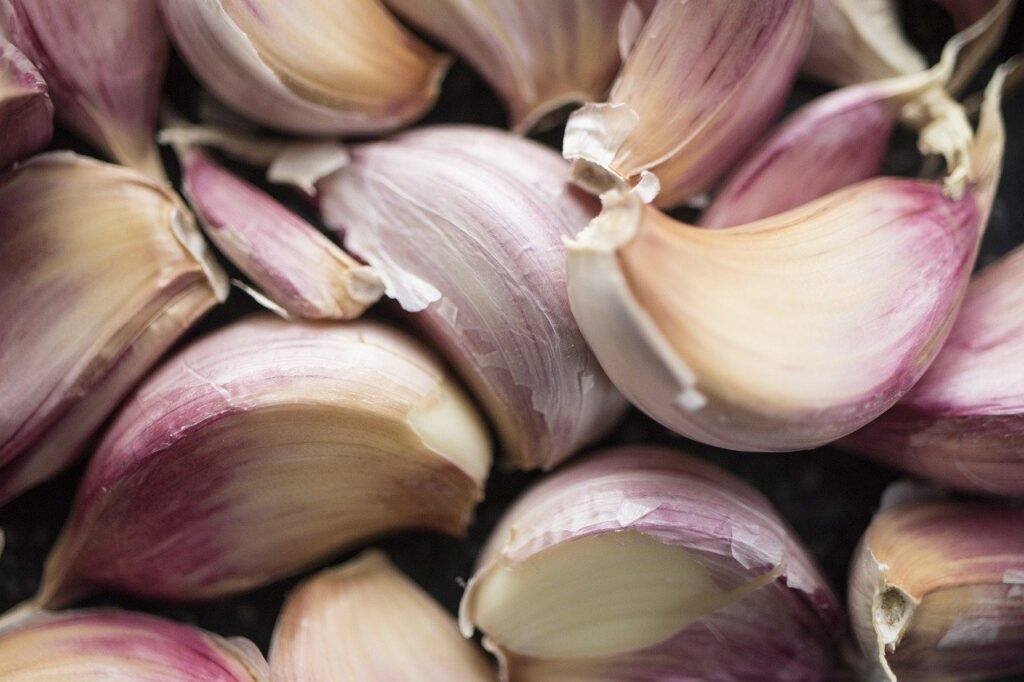 I know, I know, garlic isn’t technically an herb or spice. But it’s such a staple in my kitchen that I couldn’t leave it off this list. Garlic adds a pungent and slightly spicy flavor to dishes and is used in cuisines all over the world. It’s perfect for adding depth to soups, stews, and sauces. And, of course, roasted garlic is a delicious addition to mashed potatoes or spread on crusty bread for a quick appetizer.
I know, I know, garlic isn’t technically an herb or spice. But it’s such a staple in my kitchen that I couldn’t leave it off this list. Garlic adds a pungent and slightly spicy flavor to dishes and is used in cuisines all over the world. It’s perfect for adding depth to soups, stews, and sauces. And, of course, roasted garlic is a delicious addition to mashed potatoes or spread on crusty bread for a quick appetizer.
Just be sure to have some gum or mints on hand after enjoying this flavorful ingredient.
🌱 Nutritional Yeast
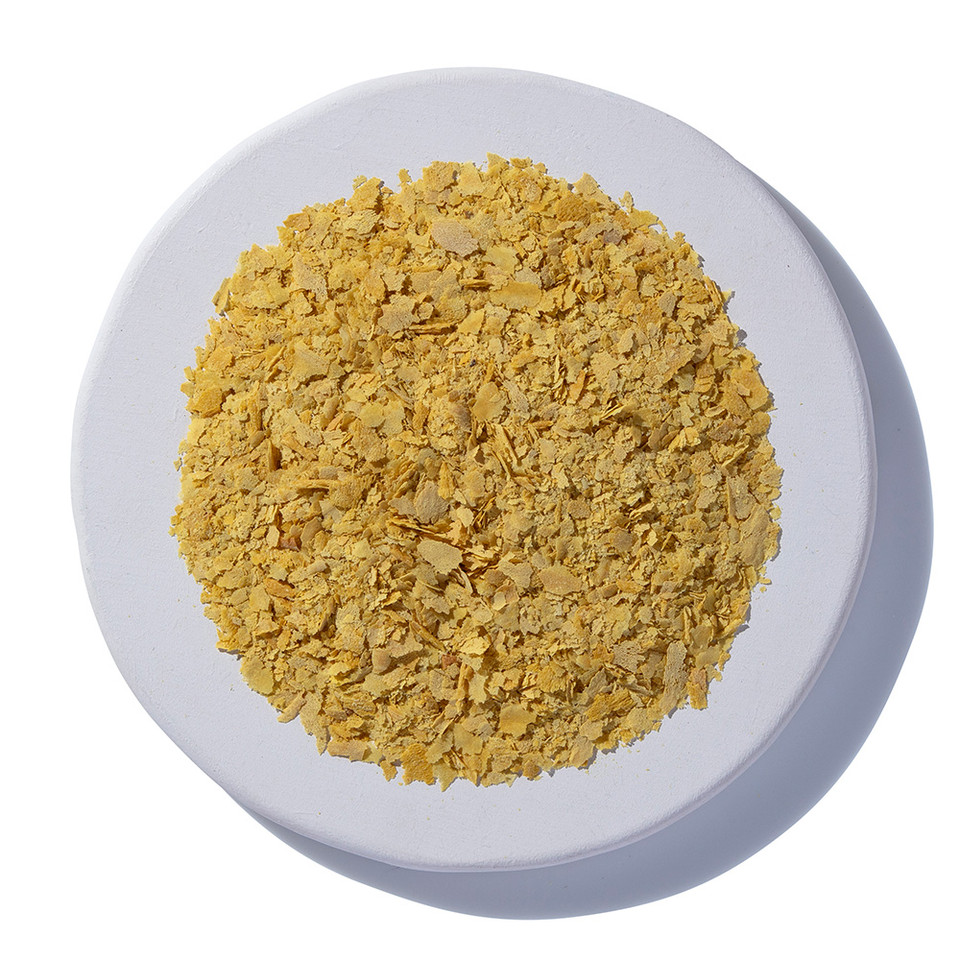 Okay, so nutritional yeast isn’t technically an herb or spice either. But it’s a must-have for any vegan kitchen. This deactivated yeast is often used as a cheese substitute in vegan recipes and adds a nutty, cheesy flavor to dishes. Sprinkle it on top of popcorn or mix it into sauces and dips for a tasty, dairy-free alternative to cheese.
Okay, so nutritional yeast isn’t technically an herb or spice either. But it’s a must-have for any vegan kitchen. This deactivated yeast is often used as a cheese substitute in vegan recipes and adds a nutty, cheesy flavor to dishes. Sprinkle it on top of popcorn or mix it into sauces and dips for a tasty, dairy-free alternative to cheese.
🌱 Smoked Paprika

If you want to add a smoky, savory flavor to your dishes without using bacon or liquid smoke, smoked paprika is the way to go. This spice comes from smoked and dried red peppers and can be used in various dishes. I love to use it in bean-based stews and chilis for a smoky, meaty flavor. It’s also great sprinkled on top of roasted vegetables or added to marinades for tofu or tempeh.
Incorporating Herbs and Spices into Vegan Recipes

Now that we’ve covered some of the best herbs and spices for vegan dishes, how can you incorporate them into your recipes? Here are a few tips to get you started:
🥗 Experiment with Combinations
Don’t be afraid to combine different herbs and spices to discover new flavor profiles. For instance, try pairing basil with garlic in your pasta sauces or turmeric with black pepper in your curries.
🥗 Fresh vs Dried
Understand when to use fresh herbs and when to opt for dried ones. Fresh herbs are great for garnishing and adding a burst of flavor at the end of cooking, while dried herbs work well in dishes that require long cooking times.
🥗 Proper Storage
Herbs and spices should be stored in a cool, dark place to maintain their flavor and potency. Remember, heat, light, and moisture are enemies of herbs and spices.
🥗 Toast Your Spices
Toasting spices in a dry pan before using them can help to release their essential oils, intensifying their flavor. This is particularly effective for spices like cumin and coriander.
🥗 Season in Stages
Add herbs and spices at different stages of cooking. Some spices need time to develop their full flavor, while others are best added just before serving.
🥗 Know Your Spices
Familiarize yourself with the flavor of each spice. Knowing what each one brings to the dish will help you make better decisions when seasoning your dishes.
🥗 Less is More
Start with a small amount of herbs and spices, then taste and adjust. It’s easier to add more than to fix an over-seasoned dish.
Properly Storing Herbs and Spices
Proper storage is essential for maintaining the freshness and flavor potency of your herbs and spices. Firstly, keep them in airtight containers and store them in a cool, dry, and dark place. Heat, light, and moisture can degrade their quality.
Remember, whole spices generally last longer than ground ones. And for those fresh herbs? Wrap them loosely in a damp paper towel and place them in a resealable plastic bag in the fridge.
When to Add Herbs and Spices During the Cooking Process
Adding herbs and spices at different stages of cooking can have a significant impact on the flavor profile of your dish. Some spices need time to develop their full flavor, while others are best added just before serving. For example, dried herbs work well in dishes that require long cooking times, like stews or soups, while fresh herbs are best added towards the end for maximum flavor.
Spices like cumin and coriander can be added at the beginning of cooking to enhance their flavor, while others, like paprika or chili powder, are best added towards the end for a burst of heat. It’s essential to experiment and learn your spices so you can use them effectively in your vegan recipes.
Frequently Asked Questions
Q: Can spices really make vegan dishes tastier?
Yes! Spices like cumin, paprika, and turmeric don’t just add flavor; they bring your dishes to life. They can transform a bland stew into a flavor fiesta. It’s all about using them right – a pinch here and a dash there.
Q: What’s the best herb for vegan Italian dishes?
Basil is your go-to herb for vegan Italian cuisine. It’s like a sprinkle of Italy on your plate. Think pesto, marinara, and even vegan Caprese. Basil is the heart of Italian vegan cooking.
Q: How can I use spices to replace cheese in vegan recipes?
Missing that cheesy flavor? Nutritional yeast is your friend. It has a cheesy, nutty taste and works wonders in sauces and sprinkled over pasta. Also, a pinch of smoked paprika can add a depth of flavor similar to smoked cheeses.
Q: What are the best spices for a vegan curry?
For a stellar vegan curry, you’ll want cumin, coriander, turmeric, and garam masala in your arsenal. They’re the foundation of that warm, rich flavor that makes Indian cuisine so irresistible.
Q: Are there any herbs that work well in vegan smoothies?
Mint is a winner in vegan smoothies. It adds a refreshing zing that can take your smoothie from good to ‘can’t-stop-drinking-this’ great. It’s a bit unconventional but definitely worth a try!
Conclusion
Cooking vegan dishes does not have to be a boring or complicated process. With just these few herbs and spices, you can add flavor, texture, and interest to any dish. Plus, the health benefits are vast regarding the antioxidants, anti-inflammatory effects, blood sugar regulation abilities, and more! So experiment with different spices in your vegan recipes so that you don’t feel like you’re sacrificing any of the flavor and satisfaction of being able to cook a delicious meal. Use this guide as your starter point to explore what works best for your palate so that you can continuously enjoy tantalizing vegan dishes.

